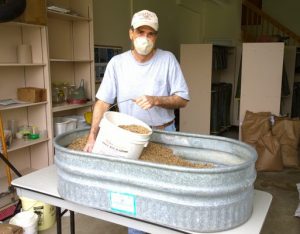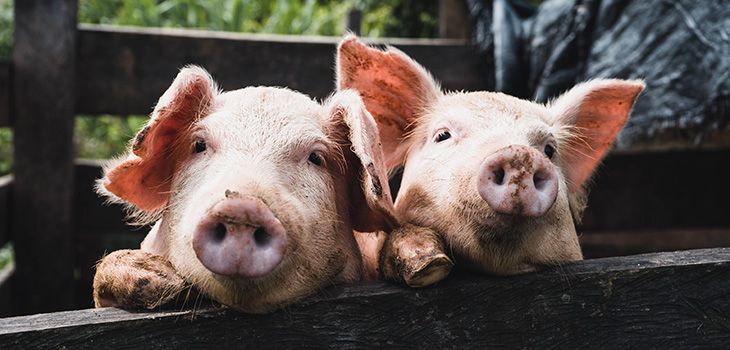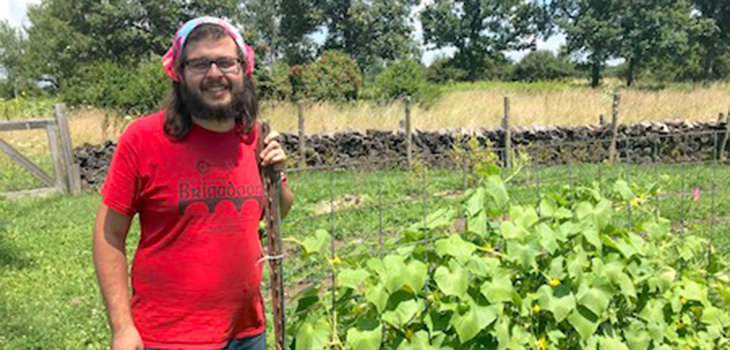 Unlike many workers, Bill Minter can see at least one of the things he’s accomplished over the past quarter century. It is a 65-acre naturalized area on the west side of Merry Lea. The 25-year project transformed abandoned cropland overrun with invasive woody shrubs into native wetland, prairie and oak savanna habitats. Over the years, as Bill had time in between teaching and other responsibilities, he removed invasive shrubs and young native trees, leaving the black oaks to mature. More recently, the work focused on controlling nonnative herbaceous vegetation such as persistent patches of Canada thistle.
Unlike many workers, Bill Minter can see at least one of the things he’s accomplished over the past quarter century. It is a 65-acre naturalized area on the west side of Merry Lea. The 25-year project transformed abandoned cropland overrun with invasive woody shrubs into native wetland, prairie and oak savanna habitats. Over the years, as Bill had time in between teaching and other responsibilities, he removed invasive shrubs and young native trees, leaving the black oaks to mature. More recently, the work focused on controlling nonnative herbaceous vegetation such as persistent patches of Canada thistle.
This May, Bill and a contractor will plant prairie seed on a ten-and-a-half acre-site known as Edwards Meadow. This is the final piece of the puzzle that will connect the black oak savanna with Edwards Wetland. No other large areas on the property are appropriate to restore in this way, so the planting brings with it a sense of completion.
Preparing Seed
The tub of seed Bill is mixing in the above photo contains 45 species of grasses and forbs native to the area. Big and little blue stem grasses, switchgrass, gray-headed coneflower and butterfly weed are a few of the species in the mix. Bill purchased most of the seed he is planting, but students in his Restoration Ecology course also collected some of it during a lab period. Seeds of some of the species needed to be stratified—mixed with damp sand and chilled in a refrigerator to simulate winter conditions.
From the various bags of seeds Bill had assembled, he created two seed mixes: one for soil with a moderate amount of moisture and one for drier conditions. Both contain about 50% grass seed and 50% forbs. Oats are also included as a nurse crop. The oats will grow rapidly and crowd out weeds while the fragile prairie seedlings put down roots and get established. Mixing the tiny, costly prairie seeds with oats also makes it easier to distribute the seeds evenly over the acreage.
During the next two years, the prairie will require mowing. The third year, it will be burned. After that, the new prairie will be on its way, and the black-eyed susans will put on their annual show for visiting hikers. Ω


